Switch Up Your Sports Game
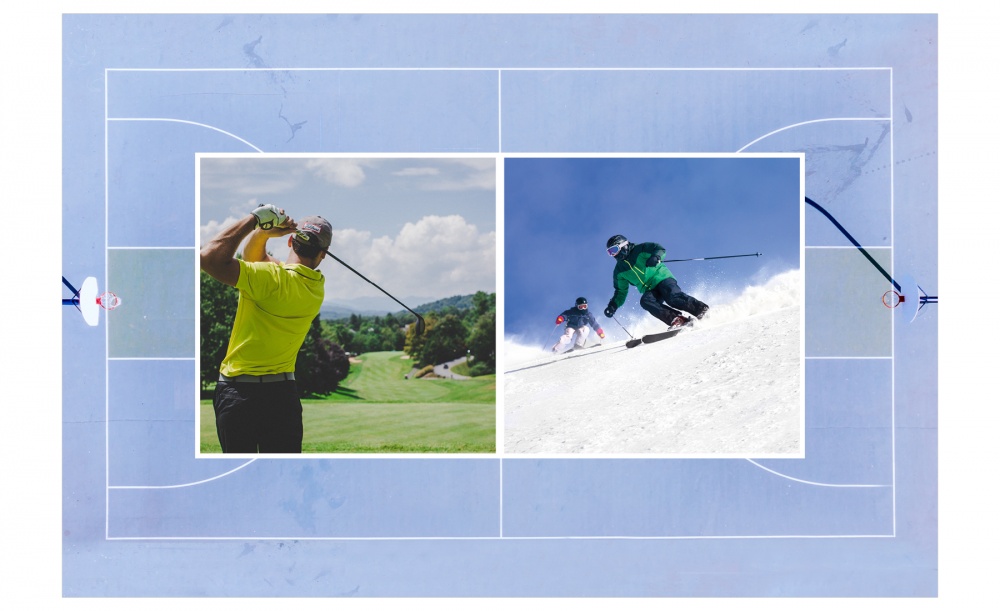
While practise undoubtedly makes perfect, switching things up in your training regime can leave you reaping the benefits come game day
We all know that the key to success in any sport is practise. Repeating the key movements needed for your chosen sport helps to improve your neuro-muscular reactions, meaning that you’re able to reduce your ‘lag time’ in different scenarios and be the first to the ball, whatever shape it may be.
But while sport-related drills may build up your muscle memory, it’s important to incorporate functional exercise and what is effectively ‘muscle confusion’ into your training regime if you really want to reach the top of your game.
One of the most effective ways you can do this is by taking up another sport in the off-season. As well as helping you to stay in great shape, a different sport can further develop your handeye and foot-eye co-ordination, explosiveness, endurance and agility in ways that you may not experience in your primary sport. The need to move your body differently to react to the scenarios you will face in this new sport will
improve your athleticism and flexibility, reducing your risk of picking up an injury while building up your power, strength and speed, and the mental strength you will build by learning how to apply your existing knowledge and skills to adapt to new, challenging situations will help to sharpen your competitive edge.
While it may be easy to think that an activity as closely-linked to your primary sport as possible would be the way to go – basketball for netball players, for example, or badminton for tennis players – in sport, as so often in life, opposites attract. Don’t believe us? Read our run down of the best sports to try your hand (or feet) at in order to complement your performance in football, netball, rugby, tennis and golf, and then make up your mind.
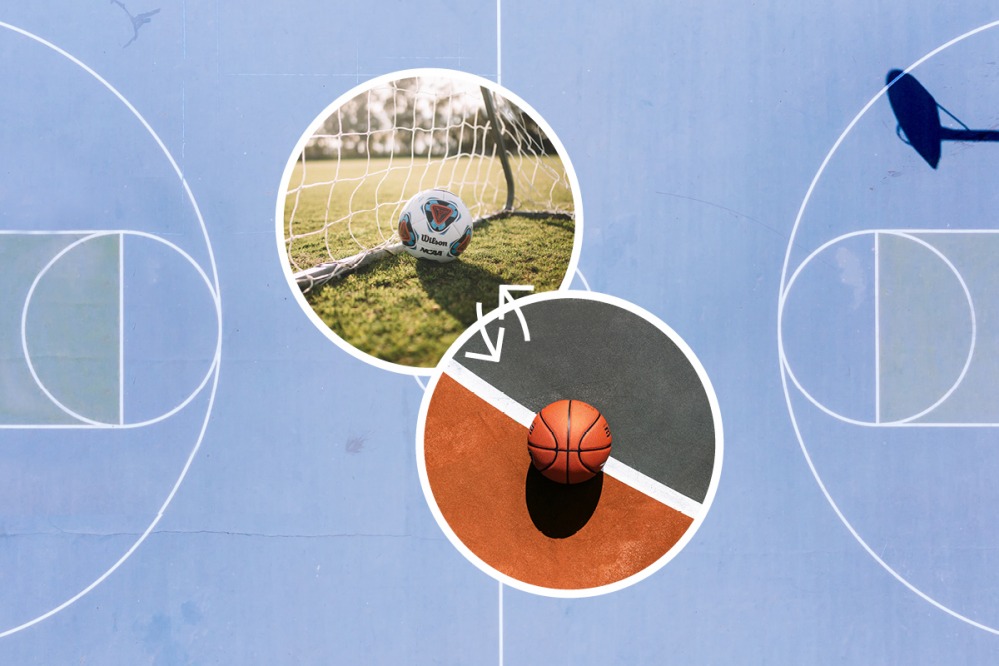
If you play… Football
Then try… Basketball
Okay, we know what you’re thinking: when I need to work on my footwork, why would I take up a sport that is all about quick hands? But there’s more to both sports than meets the eye. While football is a game that largely requires a degree of patience, good communication and trust, moving at a slower pace than a lot of other sports, basketball is a game that is built on speed, explosiveness and quick thinking. By choosing to play basketball in the offseason, you will encourage yourself to develop these under-used motor skills, which could make you way more dynamic on the football pitch.
Spatial intelligence is huge when competing on the basketball court – with 10 towering athletes all vying for one ball – meaning off-the-ball movement is essential to picking out passes at breakneck speed. Setting screens, moving around defenders, looking for open lanes and fighting to defend your own pocket of space are all staples of the game and, importantly, all directly relate to the movements you make during a football match.
If you want to receive a pass in a dangerous area on the pitch, you have to learn to move intelligently off the ball to find space. Learning to guard a basketball player in one-on-one situations will also help you develop the lateral agility needed to become a better one-on-one football defender, and quick breaks during a turnover in a basketball game could pit you in two- or three-on-one scenarios, where you must make a judgement quickly to decide who or where you are going to defend – a situation you could also easily find yourself in on the football field.
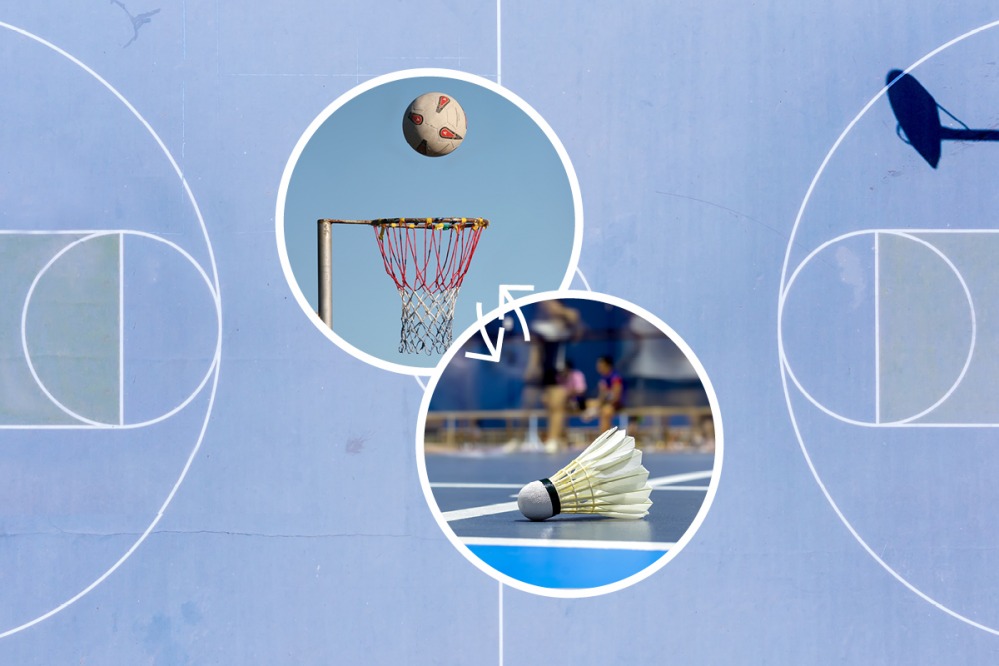
If you play… Netball
Then try… Badminton
One may favour height while the other a closeness to the court’s surface, but both netball and badminton are all about short bursts of multi-directional movements that react to aerial activity. Aerobic fitness, flexibility, speed, agility and endurance are therefore all essential to both the successful netball and badminton player.
The shuttlecock has been recorded as having moved as fast as 306 miles per hour (493kph) from a badminton stroke known as the ‘jump smash’– easily beating the fastest-recorded tennis serve of 164mph (263kph) – meaning that a high level of ‘visual fitness’ is important to excel on the court.
In essence, this means having a shorter reaction time to visual stimuli: you will need to develop the ability to rapidly read plays, anticipate movements and make good strategic decisions faster than your opponent. Badminton will enable you to develop arguably the most refined hand-eye co-ordination of all sports, as well as encouraging you to consistently perform reactive movements such as lunging, jumping and changing direction with a good level of technique.
Apply all of that to the netball court, then, and you will find that the similarities between these two sports run deeper than they first appear. Most of the fast running in netball is conducted consistently over a short distance, with the ability to accelerate quickly being of prime importance. Similarly, the ability to turn on a sixpence and change direction is integral to success on the netball court, not least when you consider the turnover rate and, if nothing else, the centrality of pivoting to the game. Hand-eye co-ordination comes into play at every stage of a netball game – judging the length and speed of a pass, contesting a shot, or receiving the ball from your teammates – and the lower back and hamstring flexibility that badminton encourages proves especially useful in making sure you’re first to a deflected ball in netball. Even when you break the sports into their nitty-gritty details, the strength, power and technique required for the ‘jump smash’ shot, as a prime example, requires a vertical jump ability that proves invaluable on the netball court.
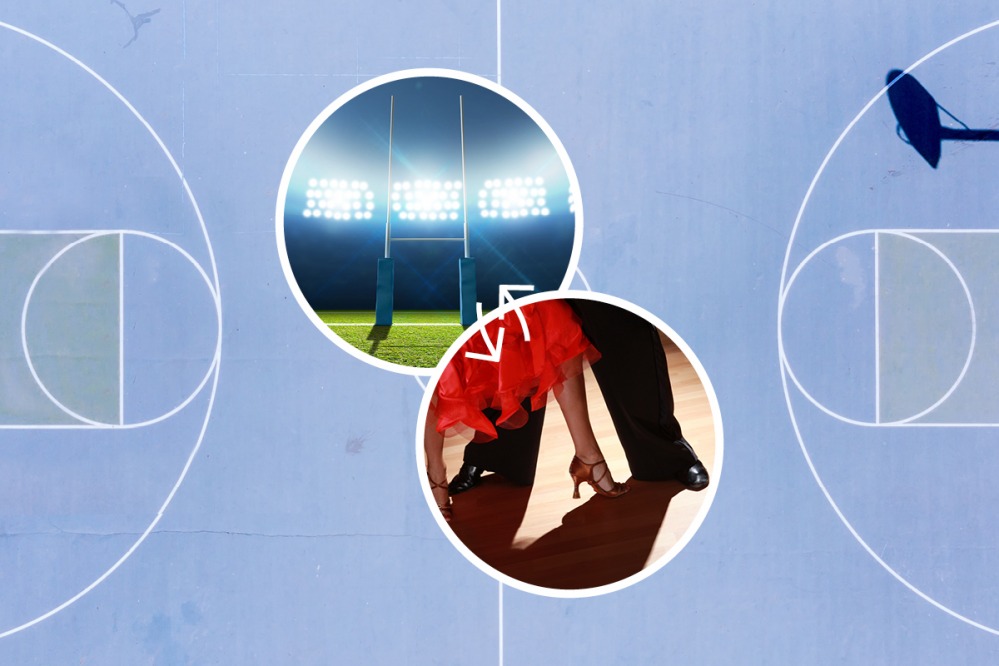
If you play… Rugby
Then try… Dance
While the idea of a big, hulking, Kyle Sinckler-esque rugby prop pirouetting is, we admit, pretty amusing, it overlooks the many benefits it can have on your athletic performance. Firstly, there’s more to dance than ballet. Secondly, dance of any genre can help to develop balance, leg strength, dexterity, co-ordination and overall cardio fitness which, as we all know, can enhance performance in any sport.
But perhaps the greatest benefit dance can bring is flexibility– something rugby players are not often known for, but which can prove invaluable on the pitch. As you teach your muscles to become more flexible through the movements of dance, the flexibility of your tendons and ligaments will also increase, meaning that the chance of suffering an injury, especially to ACLs, MCLs, shoulders and wrists (all rife among rugby players of any level) reduces significantly. Greater flexibility also helps to increase your speed, because a longer muscle is one that can stretch more – giving you the quicker reflexes needed to stop that pesky winger flying right by you for the try.
Smart training is essential for developing your skills in whatever your chosen sport, so be intelligent when deciding which style of dance may benefit you most. If you’re a winger, for example, where agility, stamina and endurance are key, modern dance may be most effective; ballet, strange as it may seem, may be most suitable for props to improve strength and posture, while tap dance may work best for half-backs to help improve co-ordination.
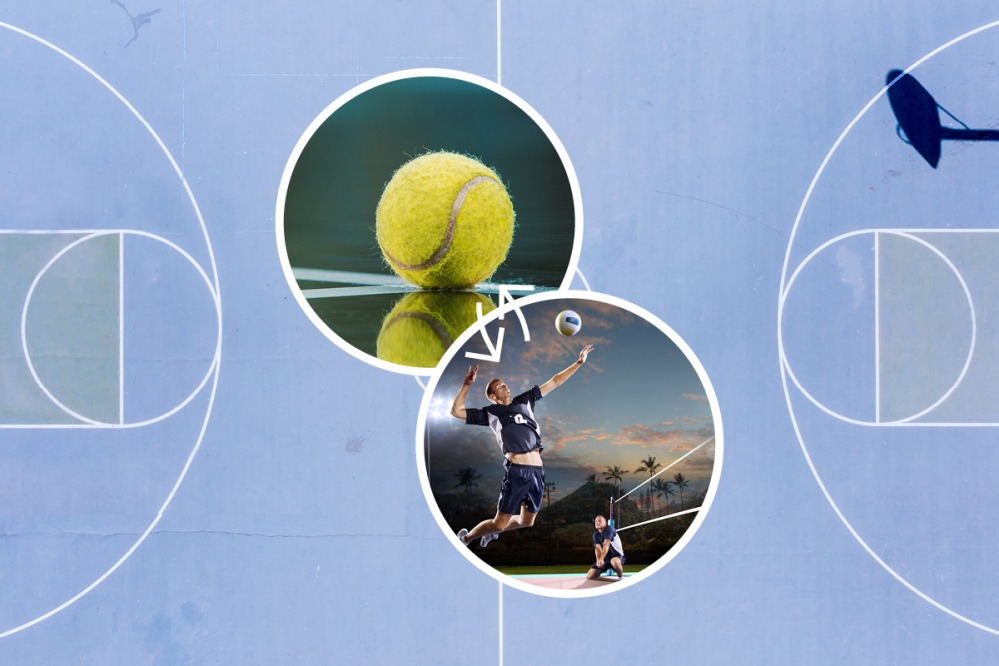
If you play… Tennis
Then try… Volleyball
Both involving powerful rallies over a net, the wholebody skills you can develop playing volleyball may prove invaluable when looking to further your tennis career. The key elements that we can observe in any volleyball match – fast, risk-taking movements, rapid reaction times, jumps and strong attacks – can all be found on the tennis court too. The powerful, attacking-style motions made by a volleyball player’s dominant arm are not-too-dissimilar to a smash shot from a tennis player’s forehand; in volleyball, the attacking action involves jumping while arching the back, which can significantly improve tennis stokes such as the service shot, encouraging more flexibility in the back which may result in a bigger kick serve; and in the general stance of volleyball players – with knees consistently bent to improve reaction time to their opponents’ return – the tennis player will find inspiration for their own stance, so they may respond in a similar manner on the court.
And while it may be higher impact than tennis, which is the risk with almost any team sport, volleyball may help to limit the risk of injury on the court through the way it improves your flexibility and reaction times – meaning that instead of lunging belatedly with little regard to your form to return your opponent’s backhand, you’ll have greater anticipation for the shot and and an improved ability to reach the ball comfortably.
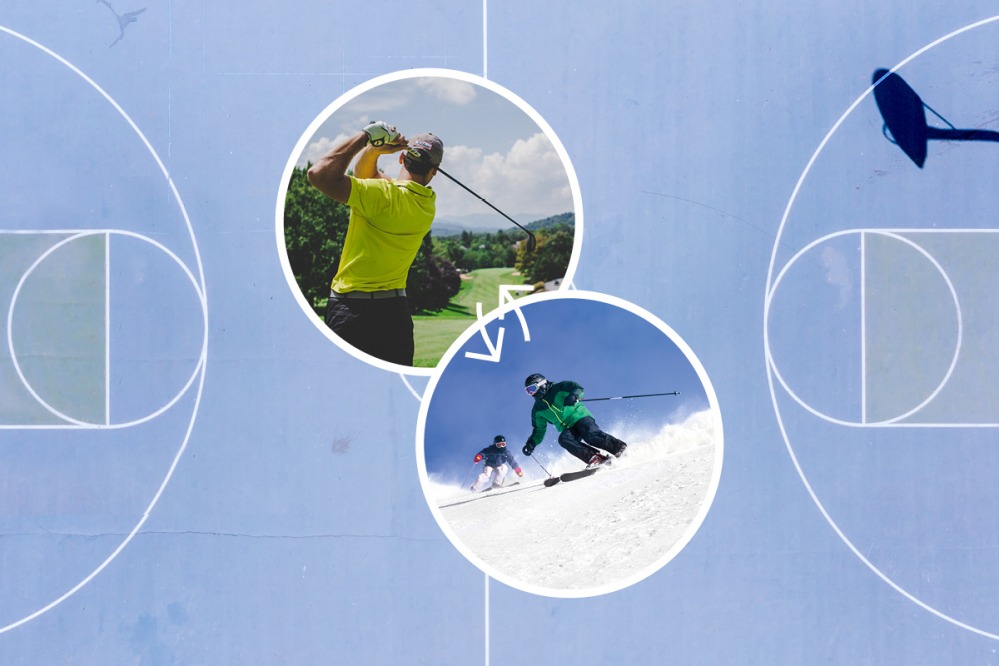
If you play… Golf
Then try… Skiing
If you’re looking to tighten up your golf game then there are a few key attributes you’ll need to develop: hip mobility (you only need to watch a good golf swing in slow-motion to recognise just how aggressive the hip rotation of some of the pros is); core strength; enough upper back mobility to achieve a full shoulder turn while maintaining core and hip stability in your back swing; and strength and power in your lower body to drive more force into the ground in order to generate a faster clubhead speed.
While it may not be the first comparison you draw, all of this can also be found on the slopes. Take hip mobility for a start: while it’s business in the upper body for most skiers, the party’s in the lower half, and as your legs turn underneath a pretty stable upper body position, rotational muscles in the core and glutes will be activated. Indeed, the gluteus maximus muscle – often described as the ‘king’ muscle among golfers – is greatly strengthened during skiing, as are both your lower back and your quadriceps, due to the almost 90-degree angle you hold your knees at while leaning forward to maintain balance for long periods of time. For the more advanced skiers among us, that development of a real sense of separation between the upper and lower body that comes when you feel comfortable on those black runs is key in developing distance in the golf swing. But even if you’re new to the slopes and start out with the wedge (or pizza slice) leg position, you’ll still be stretching your hip internal rotators, which will really help to get that golf ball flying once you’re back on the course.
Of course, when it comes to optimising your athletic performance, many different factors come into play, and we have by no means exhausted the list. What we do hope we’ve done is given you food for thought and, perhaps, the encouragement to try something new, in order to achieve excellence in your chosen sport.







